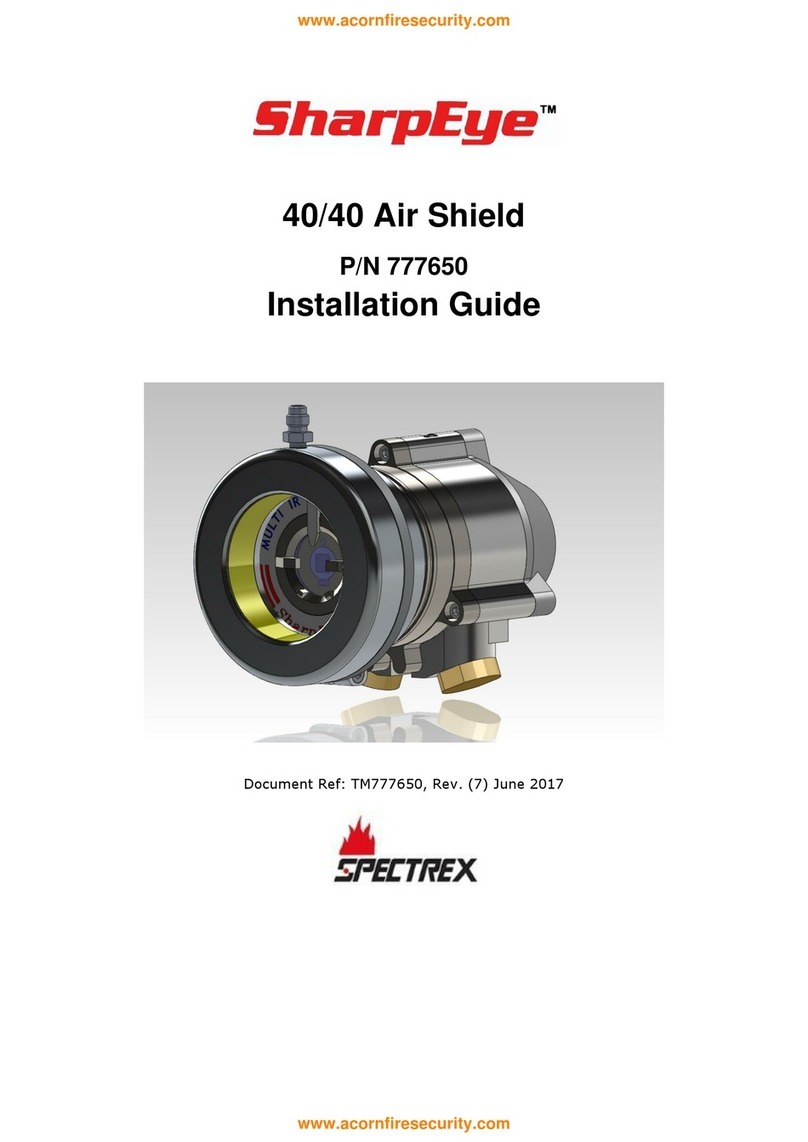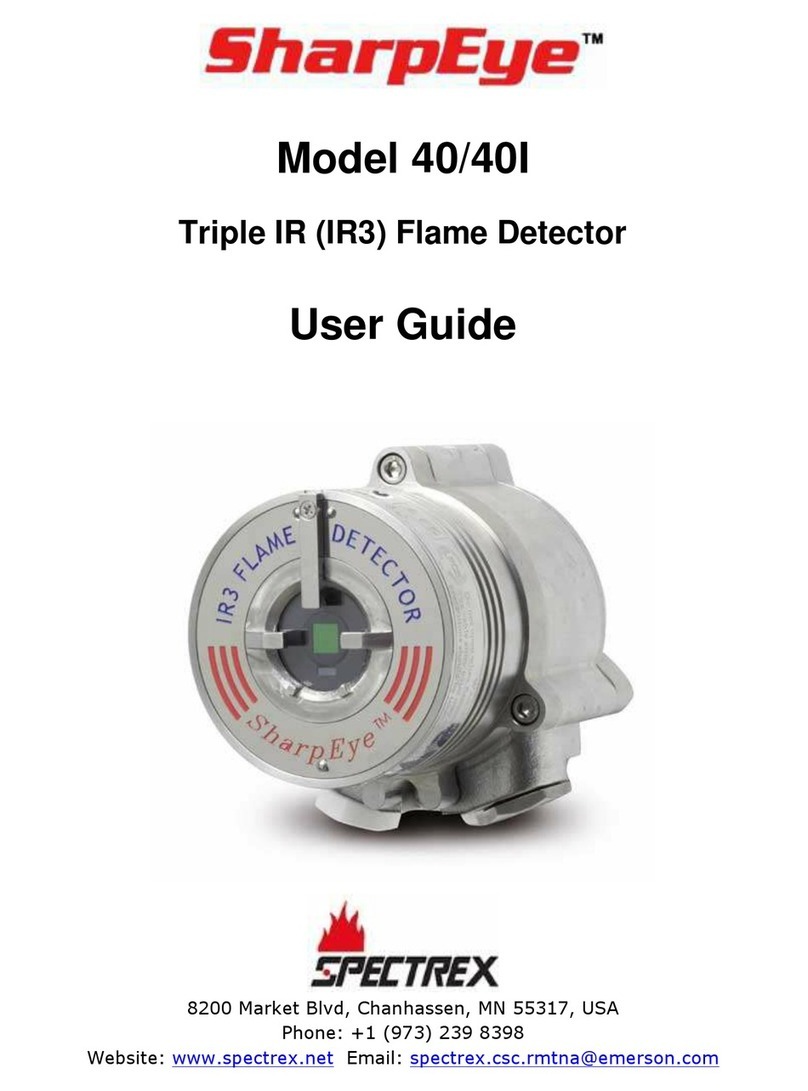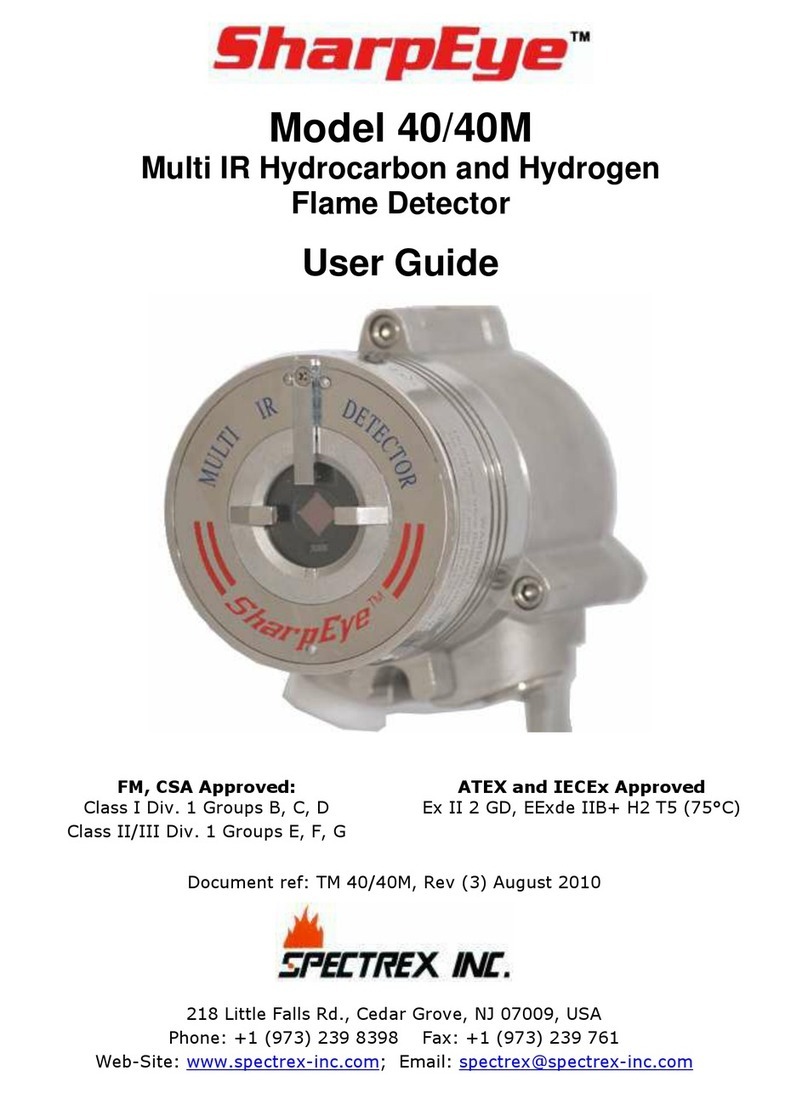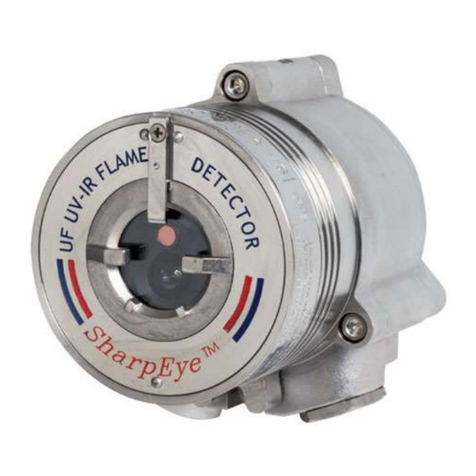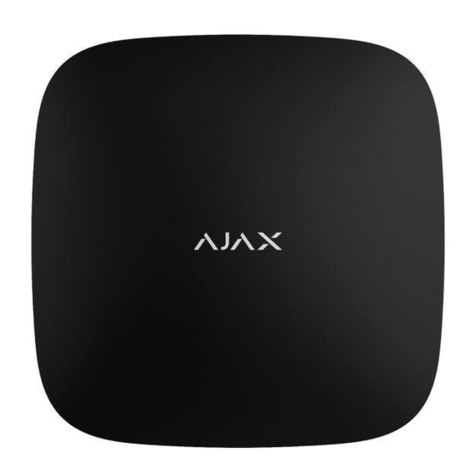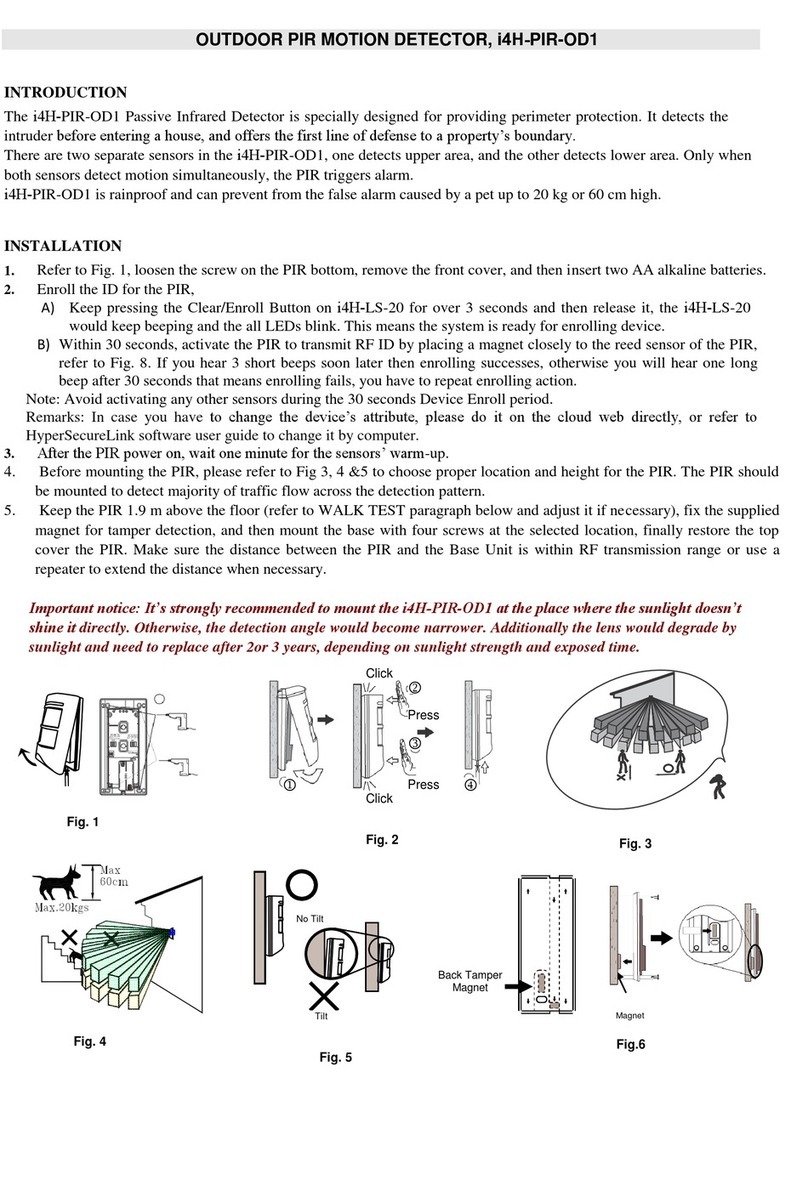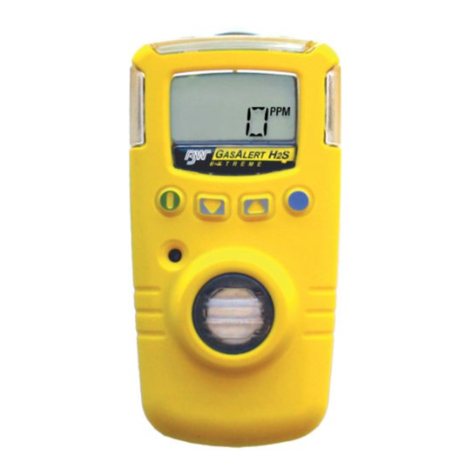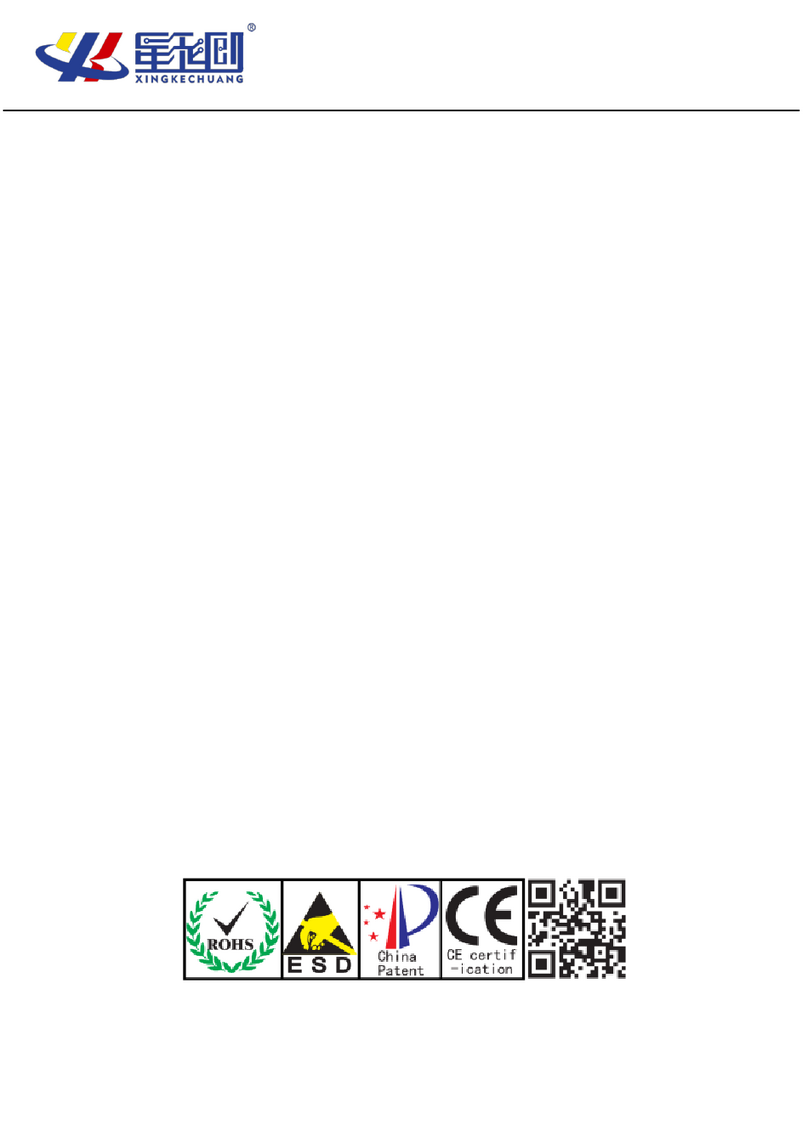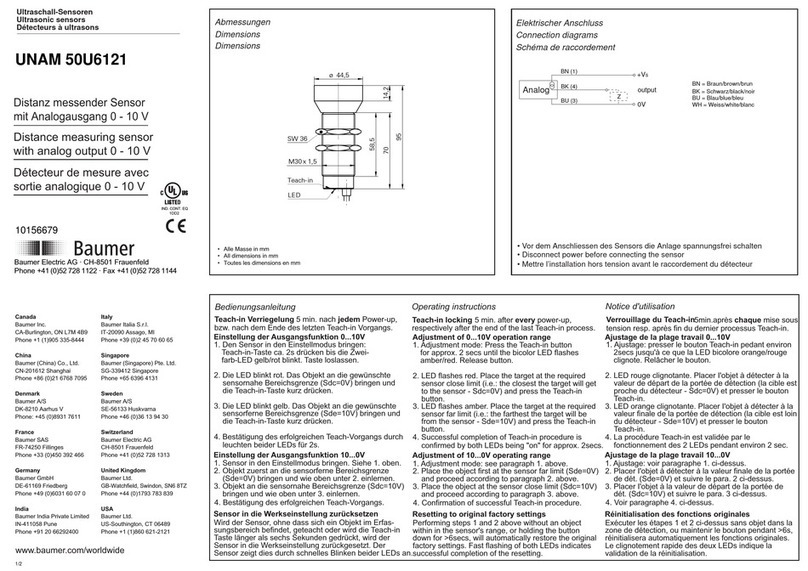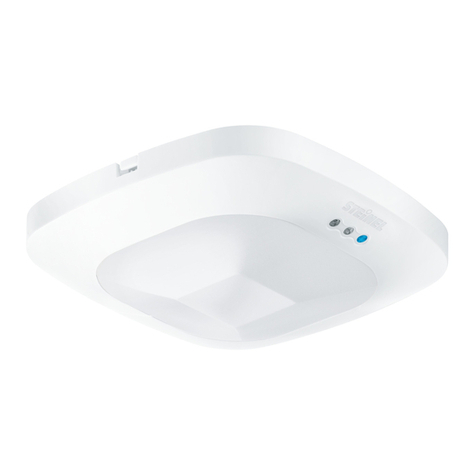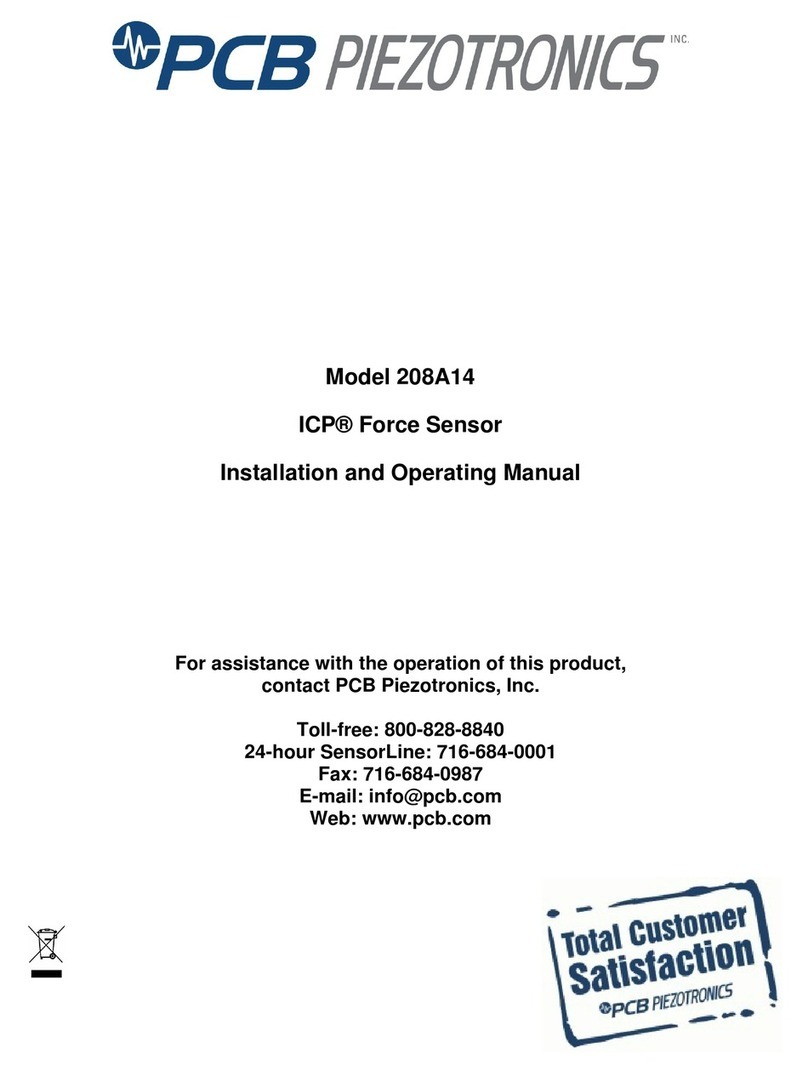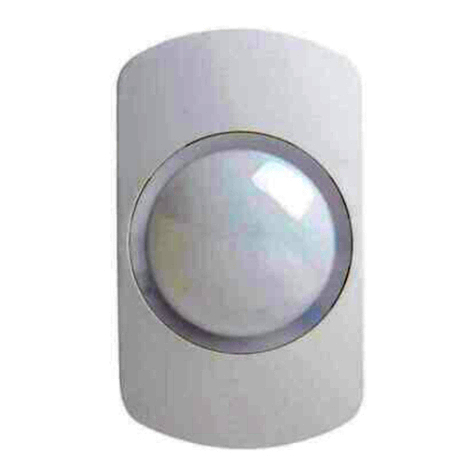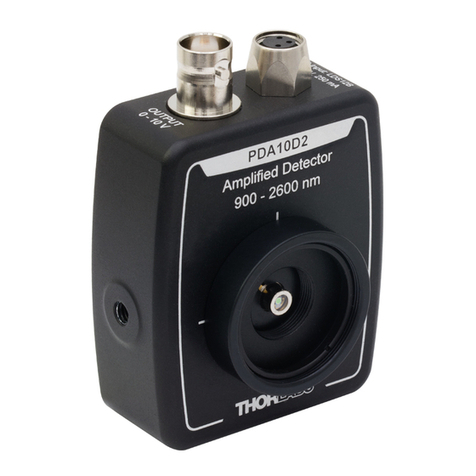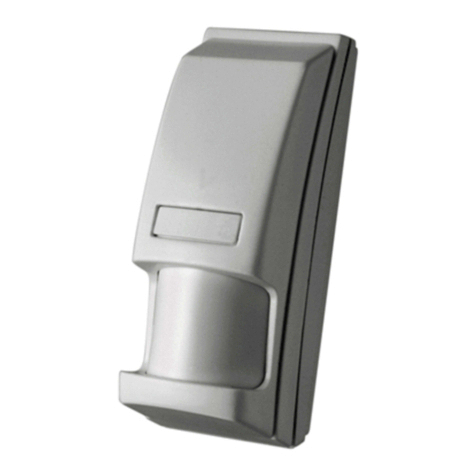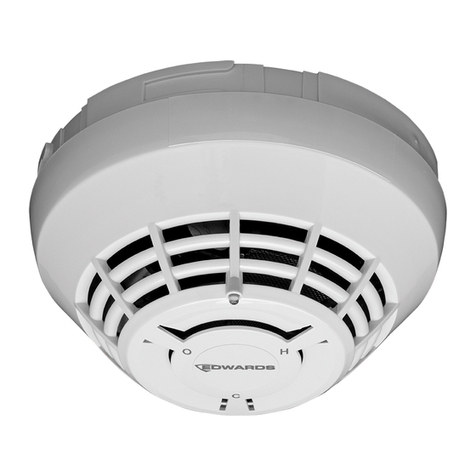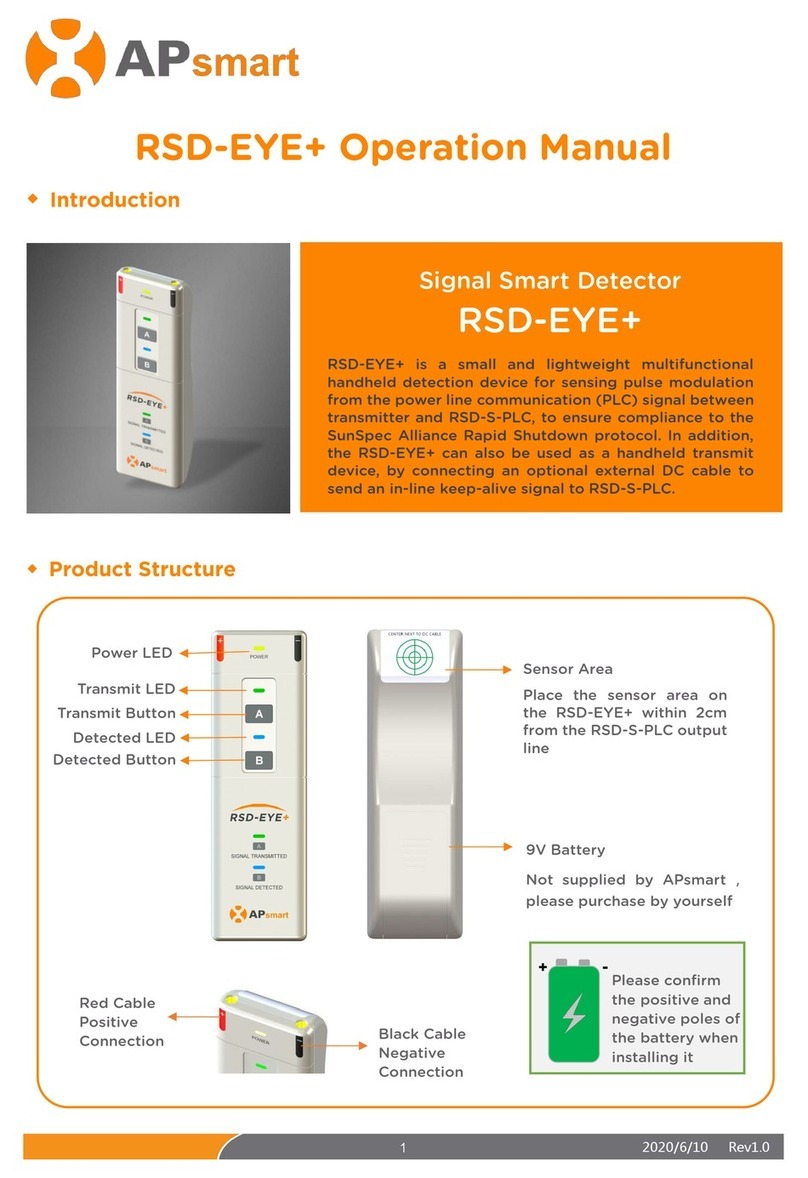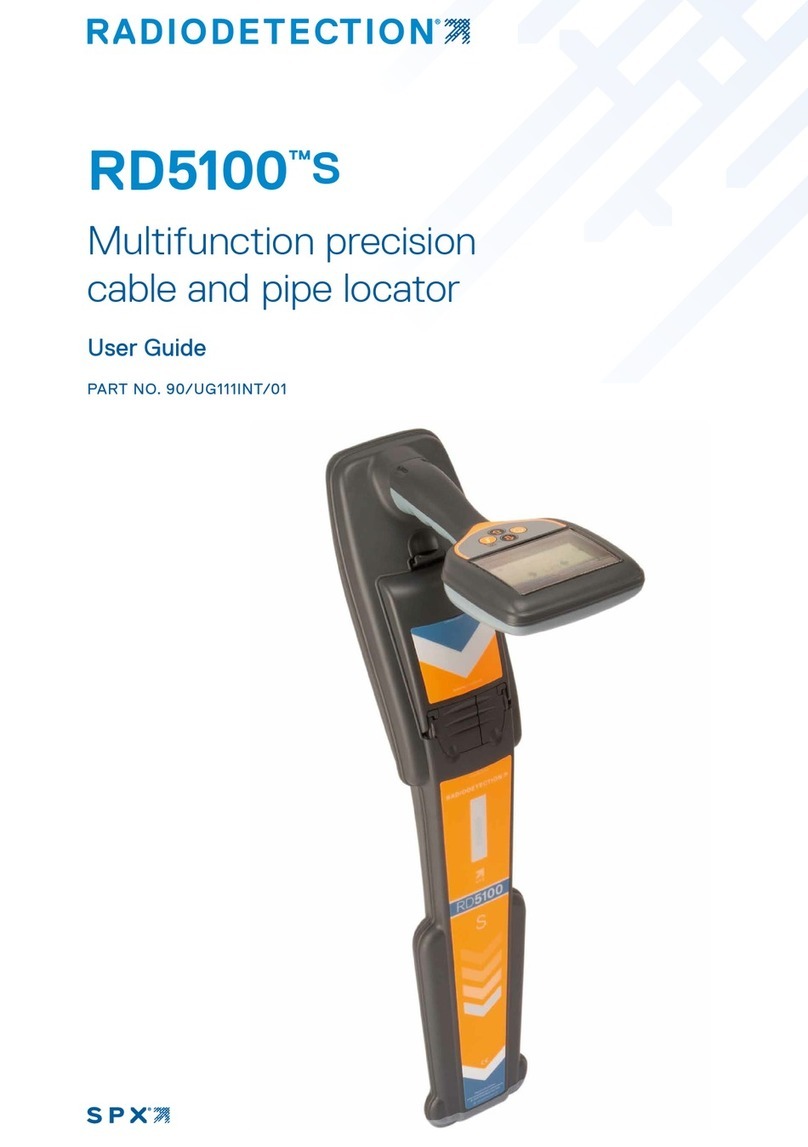SharpEye 20/20MPI Operating instructions

Legal Notice iii
Legal Notice
The SPECTREX SharpEye Optical Flame Detector described in this document is the property of
Rosemount.
No part of the hardware, software or documentation may be reproduced, transmitted,
transcribed, stored in a retrieval system, or translated into any language or computer
language, in any form or by any means, without prior written permission of Rosemount.
While great efforts have been made to assure the accuracy and clarity of this document,
Rosemount assumes no liability resulting from any omissions in this document, or from misuse
of the information obtained herein. The information in this document has been carefully
checked and is believed to be entirely reliable with all of the necessary information included.
Rosemount reserves the right to make changes to any products described herein to improve
reliability, function, or design, and reserves the right to revise this document and make
changes from time to time in content hereof with no obligation to notify any persons of
revisions or changes. Rosemount does not assume any liability arising out of the application or
any use of any product or circuit described herein; neither does it convey license under its
patent rights or the rights of others.
Warning: This manual should be carefully read by all individuals
who have or will have responsibility for using, maintaining or
servicing the product.
The detector is not field-repairable due to the meticulous
alignment and calibration of the sensors and the respective
circuits. Do not attempt to modify or repair the internal circuits
or change their settings, as this will impair the system's
performance and void the SPECTREX Product warranty.
www.acornfiresecurity.com
www.acornfiresecurity.com

SharpEyeTM IR3 Flame Detector User Guide
iv Release History
Release History
Rev
Date
Revision History
Prepared by
Approved by
2
June 2013
Second Release
Ian Buchanan
Eric Zinn
3
September 2013
Third Release
Ian Buchanan
Eric Zinn
4
September 2014
Fourth Release
Ian Buchanan
Eric Zinn
5
April 2017
Fifth Release
Jay Cooley
Shaul Serero
www.acornfiresecurity.com
www.acornfiresecurity.com

Table of Contents v
Table of Contents
Model 20/20MPI Mini Triple IR (IR3) Flame Detector ...................................... i
Legal Notice....................................................................................................iii
Release History ...............................................................................................iv
About this Guide.............................................................................................10
Abbreviations and Acronyms ............................................................................11
1Introduction ............................................................................................ 13
1.1 Product Overview..................................................................................13
2Technical Description .............................................................................. 15
2.1 Features ..............................................................................................15
2.2 Principles of Operation...........................................................................15
2.2.1 Hydrocarbon Fire Detection ..............................................................15
2.2.2 Identifying the CO2Peak..................................................................16
2.2.3 Limitations of IR-IR Flame Detectors .................................................16
2.2.4 Advantages of IR3 Technology..........................................................16
2.2.5 Modbus RS-485 ..............................................................................17
2.2.6 Types and Models ...........................................................................17
3Performance ............................................................................................ 19
3.1 Detection Sensitivity .............................................................................19
3.1.1 Standard Fire .................................................................................19
3.1.2 Sensitivity Ranges ..........................................................................19
3.1.3 Other Fuels ....................................................................................20
3.2 Cone of Vision ......................................................................................21
3.3 False Alarms Prevention.........................................................................22
4Operation ................................................................................................ 25
4.1 Visual Indications..................................................................................25
4.2 Output Signals......................................................................................26
4.2.1 Optional Latching............................................................................27
4.2.2 Built-In-Test...................................................................................27
4.3 Detector Mode Setup .............................................................................28
4.3.1 Detector Setting .............................................................................28
4.3.2 Detector Functions ..........................................................................28
4.3.3 Detector Default Setup ....................................................................30
4.4 Built-In-Test.........................................................................................30
4.4.1 General .........................................................................................30
www.acornfiresecurity.com
www.acornfiresecurity.com

SharpEyeTM IR3 Flame Detector User Guide
vi Table of Contents
4.4.2 Principles .......................................................................................30
4.4.3 Automatic BIT ................................................................................31
5Technical Specifications........................................................................... 33
5.1 Electrical Specifications..........................................................................33
5.2Approvals.............................................................................................34
5.2.1 EN54-10 ........................................................................................34
5.2.2 FM ................................................................................................34
5.3 Mechanical Specifications .......................................................................34
5.4 Environmental Specifications ..................................................................35
6Installation Instructions.......................................................................... 37
6.1 Scope ..................................................................................................37
6.2 General Considerations ..........................................................................37
6.3 Preparations for Installation ...................................................................38
6.4 Detector and Tilt Mount Installation.........................................................39
6.5 Detector Wiring ....................................................................................42
6.6 Wiring Function.....................................................................................42
6.7 Protective Cover Installation...................................................................43
6.8 Operation Mode ....................................................................................44
6.8.1 Programmable Function ...................................................................44
6.8.2 Address .........................................................................................44
6.8.3 Alarm Delay ...................................................................................44
7Operating Instructions ............................................................................ 45
7.1 Power Up .............................................................................................45
7.2 Reset...................................................................................................46
7.3 Functional Testing .................................................................................46
7.3.1 Testing with Flame Simulator Model FS-1100 .....................................46
7.4 Safety Precautions ................................................................................47
8Maintenance Instructions ........................................................................ 49
8.1 Maintenance Instrumentation and Personnel ............................................49
8.2 Preventive Maintenance Procedures.........................................................49
8.3 Periodic Maintenance Procedures ............................................................50
8.3.1 Power-Up Procedure........................................................................50
8.3.2 Functional Test Procedure ................................................................50
8.4 Maintenance Records.............................................................................50
8.5 Troubleshooting ....................................................................................50
8.5.1 Fault Indication ..............................................................................50
www.acornfiresecurity.com
www.acornfiresecurity.com

TM 20/20MPI, Rev (5) April 2017
Table of Contents vii
8.5.2 False Alarm or Warning Indication.....................................................51
8.5.3 RS-485 Communications Network .....................................................51
Appendix ....................................................................................................... 53
ATypical Wiring Configurations.................................................................. 55
A.1 Wiring Terminal 20/20MPI-R ..................................................................55
A.2 Wiring Terminal 20/20MPI-M ..................................................................56
BFlame Simulator FS-1100 ........................................................................ 59
B.1 Description...........................................................................................59
B.2 Ordering Information.............................................................................60
B.3 Unpacking............................................................................................60
B.4 Operating Instructions ...........................................................................61
B.5 Range..................................................................................................62
B.6 Charging the Battery .............................................................................62
B.7 Battery Replacement .............................................................................63
B.8 Technical Specifications .........................................................................64
Technical Support...........................................................................................66
www.acornfiresecurity.com
www.acornfiresecurity.com

SharpEyeTM IR3 Flame Detector User Guide
viii List of Figures
List of Figures
Figure 1: Flame Detector Assembly - Outline Drawing............................................17
Figure 2: Horizontal and Vertical Fields of View .....................................................21
Figure 3: Indicator LEDs ....................................................................................25
Figure 4: Tilt Mount Assembly - Outline Drawing ...................................................40
Figure 5: IR3 Detector and Tilt Mount Assembly....................................................41
Figure 6: Protective Cover ..................................................................................43
Figure 7: Wiring Terminal 20/20MPI-R .................................................................55
Figure 8: Wiring Terminal 20/20MPI-M.................................................................56
Figure 9: RS-485 Networking..............................................................................56
Figure 10: 0–20mA Source (3-Wire) - Model 20/20MPI-M ......................................57
Figure 11: Typical Wiring for 4 Wire Controllers –Model 20/20MPI-R .......................57
Figure 12: Flame Simulator ................................................................................59
Figure 13: Mini IR3 Detector Target Point.............................................................61
Figure 14: Flame Simulator Battery Replacement ..................................................62
www.acornfiresecurity.com
www.acornfiresecurity.com

TM 20/20MPI, Rev (5) April 2017
List of Tables ix
List of Tables
Table 1: Alarm Response Time versus Range ........................................................19
Table 2: Response Sensitivity Ranges ..................................................................20
Table 3: Immunity to False Alarm Sources ...........................................................22
Table 4: Welding Immunity Distance ...................................................................23
Table 5: 20/20MPI Status...................................................................................26
Table 6: 20/20MPI Output Signals .......................................................................26
Table 7: Detector State with Output Signals .........................................................27
Table 8: Time Delay ..........................................................................................29
Table 9: Function Setup .....................................................................................29
Table 10: Default function set up ........................................................................30
Table 11: Contact Ratings ..................................................................................33
Table 12: 0–20mA Current Output ......................................................................33
Table 13: Detector Default Setup ........................................................................44
Table 14: Sensitivity Ranges...............................................................................62
Table 15: Immunity Tests ..................................................................................64
Table 16: Emission Tests....................................................................................64
www.acornfiresecurity.com
www.acornfiresecurity.com

SharpEyeTM IR3 Flame Detector User Guide
10 About this Guide
About this Guide
This guide describes the SharpEye Model 20/20MPI Mini Triple IR (IR3)
Flame Detector and its features, and provides instructions on how to install,
operate, and maintain the detector.
This guide includes the following chapters and appendices:
Chapter 1, Introduction, provides a general introduction and overview
of the product.
Chapter 2, Technical Description, describes the detector’s features
and principles of operation.
Chapter 3, Performance, describes the detector’s detection sensitivity
and capabilities.
Chapter 4, Operation, describes the detector’s operation modes, user
interface, and indications.
Chapter 5, Technical Specifications, lists the detector’s electrical,
mechanical, and environmental specifications.
Chapter 6,Installation Instructions, describes preparations for
installation, wiring, and mode settings.
Chapter 7,Operating Instructions, shows how to power-up and test
the detector.
Chapter 8, Maintenance and troubleshooting, describes basic
maintenance procedures, and support procedures.
Appendix A, Typical Wiring Configurations, lists the wiring
instructions for connecting the detector, and provides examples of
typical wiring configurations.
Appendix B, Long Range IR3 Flame Simulator, describes the flame
simulator that can be specifically used with SharpEye IR3 flame
detectors.
www.acornfiresecurity.com
www.acornfiresecurity.com

TM 20/20MPI, Rev (5) April 2017
Abbreviations and Acronyms 11
Abbreviations and Acronyms
Abbreviation
Meaning
ATEX
Atmosphere Explosives
AWG
American Wire Gauge
BIT
Built-In-Test
EMC
Electromagnetic Compatibility
EOL
End of Line
FOV
Field of View
IAD
Immune at Any Distance
IECEx
International Electrotechnical Commission Explosion
IPA
Isopropyl Alcohol
IR
Infrared
JP5
Jet Fuel
Latched
Refers to relays remaining in the On state even after the
On condition has been removed
LED
Light Emitting Diode
LPG
Liquefied Petroleum Gas
mA
Milliamps (0.001 amps)
MODBUS
Master-slave messaging structure
N.C.
Normally Closed
N.O.
Normally Open
N/A
Not Applicable
NFPA
National Fire Protection Association
NPT
National Pipe Thread
VAC
Volts Alternating Current
www.acornfiresecurity.com
www.acornfiresecurity.com

Product Overview 13
1Introduction
➣In this chapter…
Product Overview
page 13
1.1 Product Overview
The SPECTREX Model 20/20MPI is a new version of the triple IR spectrum
flame detector designed to provide maximum fire protection. It uses
innovative technology of advanced digital signal processing to analyze the
dynamic characteristics of fire. Three sensitive IR channels process the
signals. Detection performance is controlled by a microprocessor and easily
adapted to all environments, applications, and requirements. The result is a
unique and superior flame detector, which provides excellent detection
sensitivity together with extreme immunity to false alarms.
To use the host software and to change the required functions, refer to
Manual TM768050 for instructions.
www.acornfiresecurity.com
www.acornfiresecurity.com

Principles of Operation 15
2Technical Description
➣In this chapter…
Features
page 15
Principles of Operation
page 15
2.1 Features
The SharpEye Model 20/20MPI Mini Triple IR (IR3) Flame Detector includes
the following features:
Detection Range: up to 140ft/43m for a 1ft2/0.1m2n-heptane pan fire
Ultra High Immunity to False Alarms (see False Alarms Prevention,
page 22)
Advanced Digital Processing of the Dynamic Characteristics of
Fire: Flickering, Threshold correlation, and Ratio
3 Separate IR Channels: Between 3–5 microns
Field Programmable Sensitivity: 4 ranges
2 Response Levels: Warning and Detection
Solar Blind
Microprocessor Based: Digital signal processing
Built-In-Test (BIT): Manual and Automatic
2 Options of Electrical Interface:
20/20MPI-R: Dry contact relays
20/20MPI-M: 0–20mA output (stepped)
Functional Approvals:
EN54-10 approved per VdS
FM approved per FM3260
2.2 Principles of Operation
2.2.1 Hydrocarbon Fire Detection
The triple IR flame detector detects all conceivable types of hydrocarbon
fires, i.e. any fire which emits CO2.
www.acornfiresecurity.com
www.acornfiresecurity.com

SharpEyeTM IR3 Flame Detector User Guide
16 Principles of Operation
2.2.2 Identifying the CO2Peak
The hydrocarbon fire is characterized by a typical radiation emission. The
CO2peak emits intense radiation in the spectral band between 4.2–4.5µ and
weaker radiation intensity outside this spectral band.
2.2.3 Limitations of IR-IR Flame Detectors
CO2in the atmosphere attenuates the radiation in this spectral band.
(Absorption and emission of radiation always occur in the same band.) As a
result, the greater the distance between the detector and the fire, the
weaker the intensity of the radiation reaching the detector is (i.e. the CO2
attenuation increases). This phenomenon explains the limitations of the
existing IR-IR flame detectors in the market:
Detection distance is restricted to 33ft/10m only.
Their immunity to false alarm sources is limited.
2.2.4 Advantages of IR3 Technology
To overcome these limitations, SPECTREX devised an innovative concept of
utilizing an additional detection channel. Three channels collect more data
from the environment, giving analysis which is more accurate and better
performance.
After careful investigation, 3 channels were selected which, when operating
jointly, provide optimal fire detection characteristics:
Channel 1: 4.2–4.6µ
Fire - the CO2peak
Channel 2: 4.0–4.2µ
Eliminates false alarms from high temperature sources
Channel 3: 4.8–5.2µ
Eliminates false alarms from flickering of background radiation
Most IR sources which create misleading IR alarm stimuli, including the sun,
incandescent and halogen lamps, electric arc discharges, electrical heaters,
etc., do not possess this unique spectral signature of fire.
The IR sensors of the detector respond only to flickering of radiation signals.
The signals are compared to a predetermined threshold. Processing of the
results from the 3 IR channels is performed by the board microprocessor.
The result is a much greater detection distance and a highly increased
ability to distinguish between fire and false alarms.
This sophisticated technology surpasses all other existing flame detection
techniques on the market today.
Note: This unique flame analysis capability (patent pending) has been
incorporated into the Triple-IR fire detector manufactured by SPECTREX.
The result is a unique flame detector which does not produce false alarms,
and at the same time, provides detection over greatly increased distances.
www.acornfiresecurity.com
www.acornfiresecurity.com

TM 20/20MPI, Rev (5) April 2017
Principles of Operation 17
2.2.5 Modbus RS-485
For more advanced communication, the 20/20MPI has an RS-485 Modbus
compatible output that provides data communications from a network (up to
247 detectors) to a host computer on universal controller, for central
monitoring. This feature enables easy maintenance, and local or remote
diagnostic tools.
2.2.6 Types and Models
The 20/20MPI has 2 models:
20/20MPI-R: Relay output
20/20MPI-M: 0–20mA output (stepped)
Figure 1: Flame Detector Assembly - Outline Drawing
www.acornfiresecurity.com
www.acornfiresecurity.com

Detection Sensitivity 19
3Performance
➣In this chapter…
Detection Sensitivity
page 19
Cone of Vision
page 21
False Alarms Prevention
page 22
3.1 Detection Sensitivity
Detection sensitivity is the maximum distance at which the detector will
reliably detect a specific size of fire and typical type of fuel (standard fire).
3.1.1 Standard Fire
A standard fire is defined as a 1ft2/0.1m2gasoline pan fire with maximum
wind speed of 6.5ft/sec / 2m/sec.
3.1.2 Sensitivity Ranges
The detector has 4 user-selectable sensitivity ranges. For each range there
are 2 response levels.
Warning (pre-alarm)
Alarm
The detection distance, for the warning level, is approximately 10% higher
than the alarm distance. Alarm response times for a standard fire at a
specified range are shown in Table 1.
Table 1: Alarm Response Time versus Range
10
20
30
40
Sensitivity Range (ft/m)
33/10
65/20
100/30
140/43
Response Time (sec)
5
8
10
10
For some typical ambient conditions the Zeta parameter, as defined in
NFPA 72 for the detector, is 0.005 (1/meter).
Note: Zeta parameters may vary significantly with changes in temperature,
air pressure, humidity, visibility conditions, etc.
www.acornfiresecurity.com
www.acornfiresecurity.com

SharpEyeTM IR3 Flame Detector User Guide
20 Detection Sensitivity
3.1.3 Other Fuels
The detector reacts to other types of fires as shown in Table 2:
Table 2: Response Sensitivity Ranges
Type of Fuel
20/20MPI-R (ft/m)
Type of Fuel
Gasoline
140/43
100%
N-Heptane
140/43
100%
Alcohol 95%
100/30
70%
JP5
100/30
70%
Kerosene
100/30
70%
Diesel Fuel
100/30
70%
Methane*
39/12
28%
IPA
115/35
80%
Methanol
98/30
70%
LPG*
39/12
28%
Polypropylene
49/15
35%
Paper
49/15
35%
*0.5m plume fire
Pan Fire Size: 1ft2/0.1m2
Maximum Wind Speed: 6.5ft/sec / 2m/sec
Maximum Response Time: 10sec
www.acornfiresecurity.com
www.acornfiresecurity.com
Table of contents
Other SharpEye Security Sensor manuals





